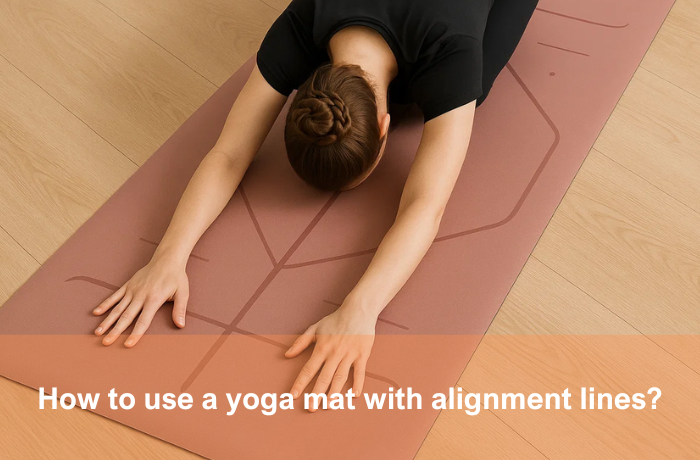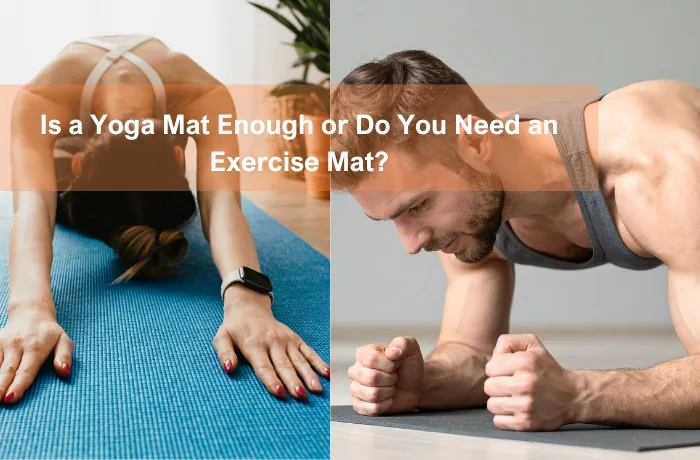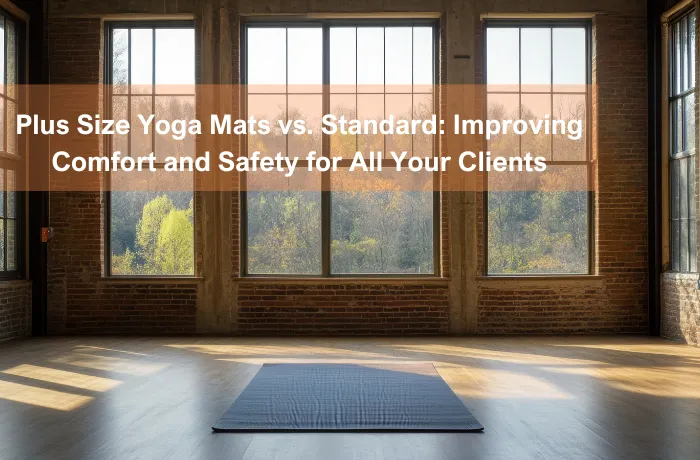Alignment lines on your yoga mat are guides for your hands and feet. These lines help you keep your body in the right spot. Studies show that using alignment lines can lower muscle strain and help your balance. For example, kids with better posture had better balance than kids with poor posture.
You can use these lines to stop injuries and learn more about your body. This works if you are new to yoga or have done it for years.
Key Takeaways
- Use the alignment lines on your yoga mat to help place your hands and feet in the right spots. This helps you balance better and lowers your chance of getting hurt.
- Get your mat ready by cleaning it gently. Put it on a flat floor with the lines facing up. This will help you see the lines clearly.
- Follow the center and angle lines to keep your body straight and safe. This is important for poses like Warrior and Downward Dog.
- Check your posture often by taking photos or using apps. This helps you see how you are doing and learn more about your body over time.
- Change the lines or add markers if you need to. Use props to make your practice more comfortable and safe.
Yoga Mat Setup
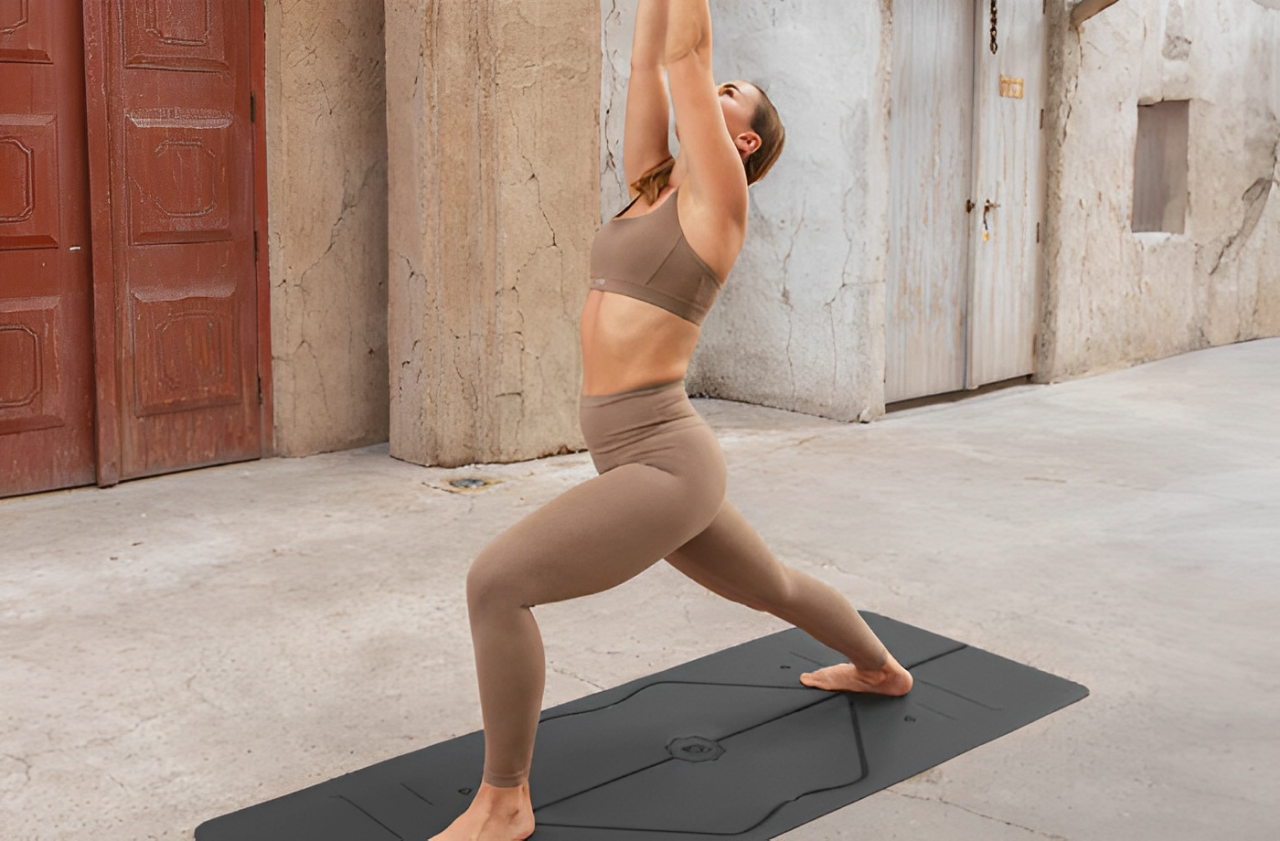
Surface and Orientation
Start by choosing a flat, clean area for your yoga mat. A smooth surface helps you avoid bumps that can affect your balance. You want your mat to stay steady during practice. Here are some steps to prepare your space and mat:
- Wipe down your mat with a soft cloth and mild soap. This keeps the surface clean and helps maintain grip.
- Avoid using harsh chemicals or soaking the mat. These can damage the material and cause it to wear out faster.
- Let your mat air dry away from direct sunlight. This prevents cracking and fading.
- Store your mat in a cool, dry place. Roll it loosely or lay it flat to avoid creases.
- Clean your hands and feet before practice. This reduces dirt and oil on the mat.
Tip: Regular cleaning keeps your yoga mat hygienic and helps you avoid slipping.
When you unroll your mat, make sure the alignment lines face up. Place the mat so the central line runs straight in front of you. This setup helps you use the lines as guides during your poses.
Understanding Alignment Lines
Alignment lines come in different shapes and patterns. Each type serves a special purpose:
- Central Line: Runs down the middle of the mat. Use this line to center your body and check your posture.
- Horizontal Lines: Cross the mat at intervals. These help you place your hands and feet evenly.
- 45-Degree Lines: Angle out from the center. These guide your foot placement in poses like Warrior or Triangle.
- Shapes or Markers: Some mats have dots or small shapes. These act as extra guides for hand or foot placement.
A non-slip yoga mat is important for safety. The textured surface helps you hold poses without sliding. This reduces the risk of injury and lets you focus on your practice.
Alignment in Poses
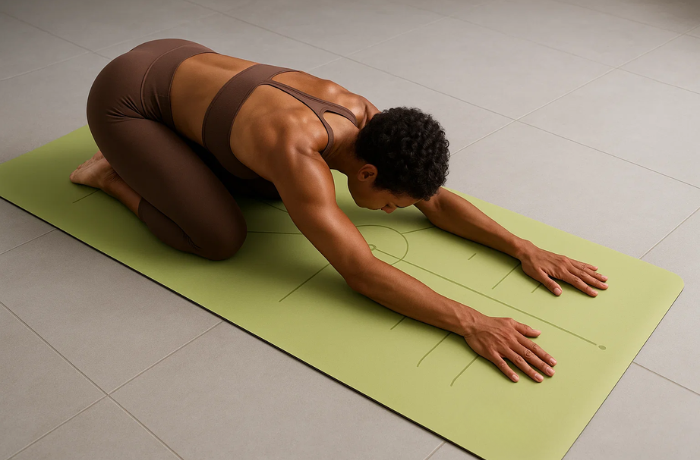
Hand and Foot Placement
When you start a pose, your hand and foot placement shapes your entire posture. Alignment lines on your yoga mat help you find the right spots for your hands and feet. You can use these lines to check if your body is centered and balanced.
- Place your yoga mat on a flat surface. Make sure the center line runs straight in front of you.
- Stand at the top of the mat. Line up your feet with the central line. This helps you start in the right position.
- For poses like Plank or Downward Dog, spread your fingers wide and place your hands on the horizontal lines. This keeps your wrists safe and your arms strong.
- Adjust your feet so your toes or heels touch the lines or markers. This helps you keep even weight on both sides.
Studies show that different foot placements change how your body balances and moves. For example, a wider stance can make you more stable, while a narrow stance can challenge your balance. Using the alignment lines, you can try different positions and see what feels best for your body.
Tip: Check your hands and feet often during practice. Small changes can make a big difference in your balance and comfort.
Using Central and Angle Lines
The central line is your main guide. It helps you keep your body straight and centered. Angle lines, like the 45-degree lines, show you where to place your feet in poses that need a wider base.
- Use the central line to line up your spine, head, and hips. This keeps your posture strong and safe.
- Place your feet along the angle lines in poses like Warrior or Triangle. This helps you open your hips and keep your knees safe.
- Adjust your hands and feet so they match the lines. This helps you avoid twisting or leaning too much to one side.
Yoga instructors often show better balance and posture than beginners. They have less sway in their chest and waist during balance tests. Their walking is more even, and they can stand on one leg with less movement. These skills come from practicing good alignment and using visual guides, like the lines on your mat.
Note: The lines are tools to help you learn. Over time, you will feel your body become more balanced and aware.
Common Pose Examples
You can use alignment lines in many yoga poses. Here are some step-by-step examples:
Downward Dog
- Start on your hands and knees. Place your hands on the horizontal lines, shoulder-width apart.
- Tuck your toes and lift your hips up. Try to make a V shape with your body.
- Keep your head between your arms. Look toward your navel or the center line.
- Press your heels toward the mat, using the lines to keep your feet even.
This pose helps you stretch your back and legs. The lines help you keep your hands and feet in the right place. Focus your gaze on the center line or your navel to help you balance and stay steady.
Warrior Pose
- Stand with your feet wide apart. Place your front foot on the central line.
- Turn your back foot out, lining it up with the angle line.
- Bend your front knee. Make sure your knee stays above your ankle and follows the line.
- Stretch your arms out, keeping them level with the horizontal lines.
The lines help you keep your hips and shoulders facing forward. This keeps your body strong and balanced.
Plank Pose
- Start at the top of your mat. Place your hands on the horizontal lines, shoulder-width apart.
- Step your feet back, keeping them on the central line.
- Keep your body straight from head to heels. Use the lines to check your alignment.
In each pose, the lines act as visual focus points. They help you keep your body in the right position. You can use your gaze to stay focused and calm. This supports your breath, strength, and flexibility.
- Yoga practitioners who use alignment and posture cues show better balance and less trunk sway, even with eyes closed.
- Good alignment improves your core and leg strength. It also helps your body respond better to movement and balance challenges.
Tip: Use the lines as guides, not strict rules. Every body is different. Adjust your placement to fit your needs.
Posture Correction
Self-Check Techniques
You can use self-check techniques to help your posture in yoga. Many experts say simple tools and technology can show your progress. For example, you can take photos of yourself in different poses. Look at these photos to see if your alignment gets better over time. Some mobile apps, like PostureScreen Mobile, help you mark key points on your body in photos. The app then shows you where your posture needs work. Studies say these apps give good results, especially if you check your progress often.
Wearable devices, like Upright Go 2, can help too. These devices sense when you slouch and remind you to sit up straight. The device connects to an app that tracks your posture and gives you exercises. You can use these tools to check your alignment and make small changes. Experts say self-checks work well because you can repeat them and see real improvement.
Tip: Try to check your posture at the start and end of each practice. Use your phone or a mirror to spot changes.
Building Body Awareness
Body awareness means knowing how your body feels and moves. Yoga helps you build this skill. When you use alignment lines, you pay more attention to your hands and feet. This focus helps you notice small changes in your balance and posture.
- Yoga practitioners often have higher body awareness than people who do other sports.
- Doing yoga every day for a few months can help you notice your body more.
- Advanced yoga students have even better awareness, which helps them do poses better.
- Body awareness links to better well-being and control during yoga.
- Using alignment lines may help you notice your body’s position and improve your performance.
Some studies use heartbeat-counting tasks to measure body awareness. Focusing on your breath and body during yoga can help, but beginners may get different results. Over time, you will learn to feel your body’s position without always looking at the lines. This skill helps you move safely and with confidence.
Note: Building body awareness takes practice. Stay patient and keep checking in with your body during each session.
Personalizing Your Practice
Customizing Alignment Lines
You can make your yoga practice better by changing the alignment lines on your yoga mat. Everyone’s body moves in its own way. Usual alignment cues might not work for all people. Experts say forcing your body into one position can hurt or cause pain. It is better to watch how your joints move. For example, see how your shoulder, arm, and rib cage move when you lift your arms. Change where you put your hands or feet if it feels more natural. This helps you move easier and lowers strain.
Some people add extra markers or tape to their mat. This makes new lines that fit their needs. You can try this if the normal lines do not match your body. After some time, you will know which spots help you feel strong and balanced.
Tip: Pay attention to your body. If a pose hurts, change your placement. The goal is to help your movement, not force it.
Adapting to Your Needs
You can use tools and props to help your alignment. Many people use cushions, blocks, or wedges to keep their bodies in the right spot. For example, inflatable cushions let you change how much support you get. Wedge cushions can help your lower back or knees. Some people use more than one cushion to make a setup that fits them.
Yoga and Pilates help you build core strength and body awareness. These skills help you keep good posture. Mindfulness and body scan exercises help you notice tension or if something feels off. You can use these to make small changes while you practice.
A case study showed people with flat feet got better posture and less pain by doing special exercises. They paid attention to how their feet supported their bodies. This shows you can change your alignment plan for your body type. Your yoga mat can help you learn about your body and make your practice fit you.
Remember, your practice is special. Try different setups and props until you find what works best for you.
Using a yoga mat with alignment lines can help your posture. It also keeps you safer and helps you notice your body more. Many people pick mats that give feedback as they move. These mats guide you and help stop injuries. More people now want smart yoga mats for extra support. Try these ideas the next time you do yoga. Test different ways to set up your mat and see what feels best for you.
FAQ
How do alignment lines help beginners in yoga?
Alignment lines show you where to place your hands and feet. You can use them to check your posture. These lines help you learn poses faster and avoid mistakes. You build confidence as you practice.
Can I use alignment lines for advanced yoga poses?
Yes, you can use alignment lines for advanced poses. These lines help you keep your body balanced and safe. You can adjust your position and improve your form. Many experienced yogis use them for better results.
Do alignment lines work for all body types?
Alignment lines give you a starting point. You may need to adjust your placement for comfort. Listen to your body and move your hands or feet if needed. The lines help guide you, but your comfort matters most.
How do I clean a yoga mat with alignment lines?
- Wipe your mat with a soft cloth and mild soap.
- Avoid harsh chemicals.
- Let it air dry away from sunlight.
- Clean your mat often to keep the lines clear and the surface safe.

